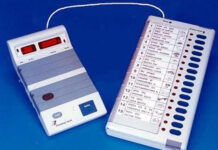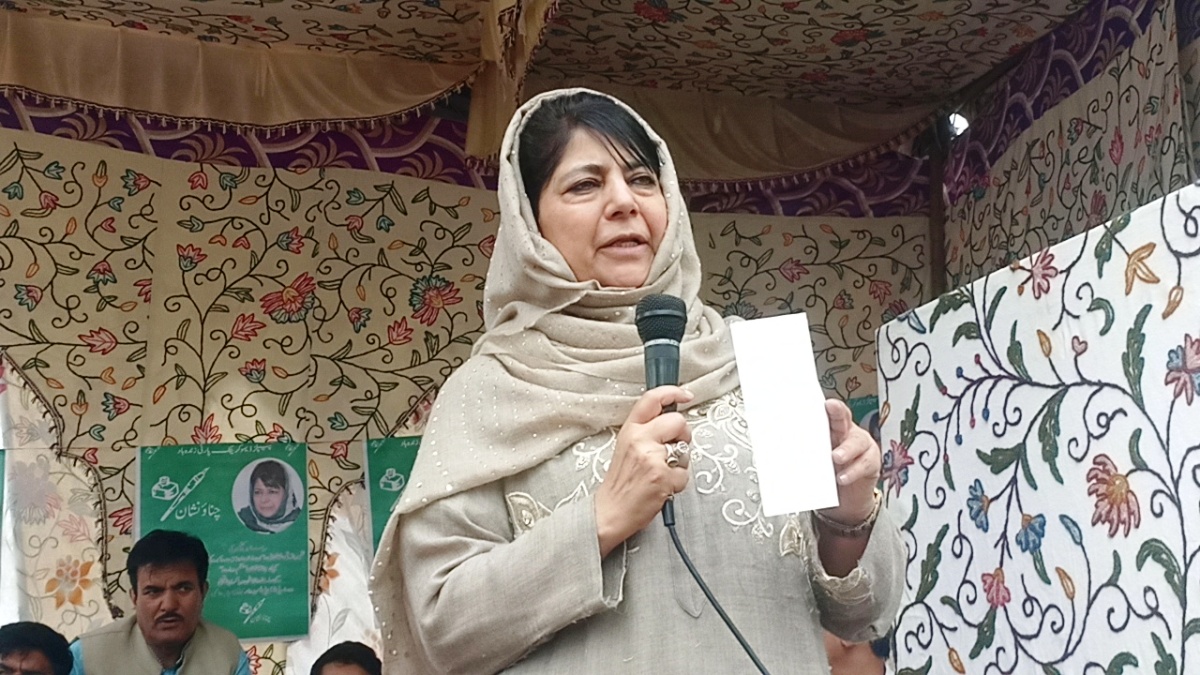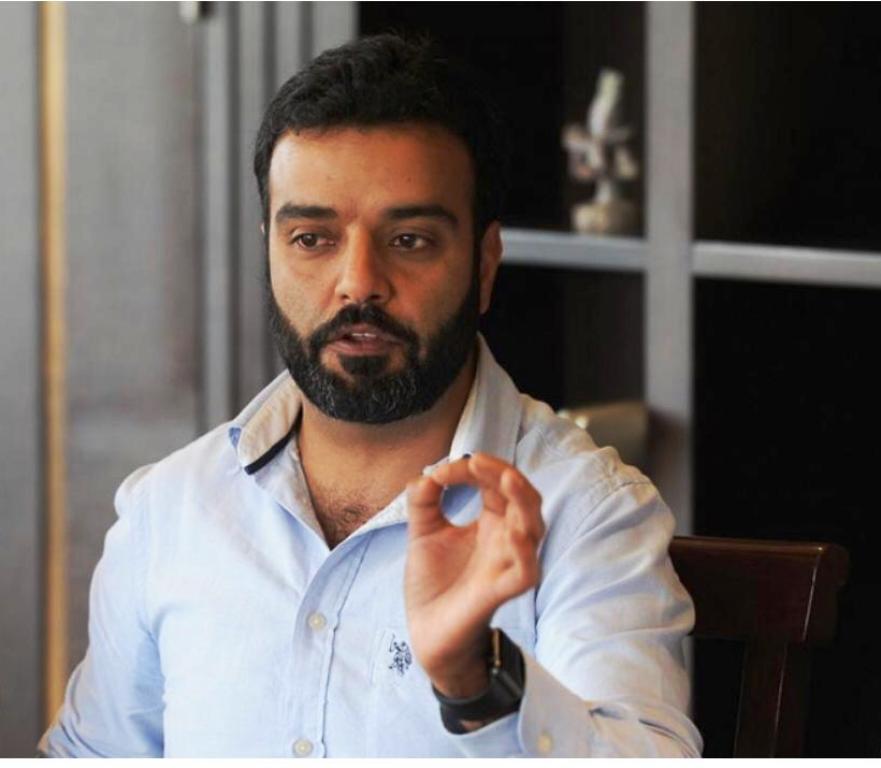by Saima Bhat
SRINAGAR: As the United States of America is struggling to survive the pandemic battle, a Kashmir born doctor Dr Parvez Ahmad Mir, a pulmonologist and an intensive care expert is leading the battle from the front in one of the New York hospitals. So far, he and his team have treated around 2000 Covid-19 patients, of whom 300, mostly Latino and black with poor health insurance, have died.

Mir, a Kashmiri doctor, is the youngest son of former legislator late Mir Assadullah, a resident of Chareel in Banihal. He graduated from Government Medical College, Srinagar in 1980 and flew to the US where he completed his Internal Medicine residency at Wyckoff Heights Medical Centre. After training in Pulmonary Medicine at Long Island Jewish Medical Centre, Northwell, he joined pulmonary and critical care at Wyckoff Heights Medical Centre, a department he now heads.
Mir received his first Covid-19 patient, a 82-year-old woman, on March 10, who later succumbed to the infection after 10 days of her admission in the hospital. She was the first casualty in his hospital and the first death in the pandemic in the whole New York City, which by now has a mortality of 30,400. This patient neither had a travel history nor any contact history where she could have come in contact with an infected person. Since then Mir is managing the crisis from the front and his struggle led him to last week’s Time magazine’s cover story Contagion of Fear-One month inside a New York hospital as a virus took over the world.
Dr Mir took over the intensive-care unit at Wyckoff—a 16-bed facility within the hospital—in 1998, and since then he is there on the ward’s 10th-floor.
In the intensive-care ward, Mir worked for six weeks without a day off, updating health officials and colleagues while also trying to come up with an effective mix of drugs and treatments. He was probably the first who had his treatment principle simple at first. Instead of medical textbooks, he used the blogs of frontline doctors from other continents to guide him. In late March, when President Trump was advocating the use of hydroxychloroquine, an anti-malaria drug, Mir gave it to many Covid-19 patients, only to observe that it was impairing their heart function. From autopsy reports, he saw tiny blood clots permeating bodies of Covid-19 patients, so he ordered patients to get blood thinners.
“I call this disease Russian roulette,” he told Time. One of the first patients he managed to take off the ventilator was in his 80s. Then he treated two brothers, Miguel and Leobardo Herrera. Leobardo survived. Miguel did not.
At WHMC, he is struggling with the virus at multiple fronts like from space crunch to unpreparedness. With no adequate guidelines from the government at place, the hospital staff is handling the situation on its own.
WHMC is located in the area dominated by Afro-Americans and Latinos, who mostly belongs to the middle class or the lower class setup. So the hospital staff fearing the spread of the infection, many health workers either went on leave or left the job. But in the intensive care unit of the hospital none of his staffers left the job, they worked tirelessly to save the lives of their patients.
When they received their first patients at WHMC in March all they knew that time was what they had come across the various news reports that there is an outbreak in China, which spread to Asia and then jumped to Europe, killing thousands. Other than that they had no preparedness like most of the health facilities in America. They just had one room equipped to handle patients with a highly infectious disease. But after a month, while dealing with the patients they simultaneously have improved to 60 of them.
While giving the description of the room where all these critical patients were put, the Time wrote that “A dozen patients cling to life on ventilators, their beds cocooned in plastic sheets that are stapled to the ceiling and duct-taped to the walls. From overhead, the loudspeaker issues a call for help—“Respiratory and anaesthesia, stat”—that has become the refrain of this pandemic.”
With just 350 beds capacity, WHMC so far has treated more than 2000 Covid-19 patients, and that includes nearly 200 of this facility’s staff who got infected while treated the patients. As getting closer to patients was a risk but the staff took this risk and it was through loudspeakers that they used to connect with the staff inside these wards.
“I don’t think we’ll ever be the same,” Dr Mir said once on the loudspeaker after which only the hisses and beeps of the breathing machines were audible. “We’ve seen so much death, so much chaos, so much catastrophe.”
This story was done by the Time team, when they were given access to the health facility starting on April 9, as the pandemic had reached its apex in the city. The team was witness to how the Mir and his staff were forced to improvise with the increased load of patients.
At the same time due to the shortage of masks and disinfectant, it resulted in anxiety among the staff, due to which dozens of its health care workers, cleaners and technical staff walked off the job, took leave or retired, and by the height of the pandemic, the hospital was operating without 1 in every 4 employees.

But since the start of this pandemic in the City, Dr Mir had in mind that his patient’s symptoms resembled what doctors in Asia and Europe had been reporting. And it was because of this, he put his very first patient, 82-year-old woman, in isolation the day after she arrived at the hospital. She showed signs of recovery after a week on a ventilator. But after 10 days in the hospital, she died.
As the news spread like a wildfire for the news organisations but for this hospital, it was terrifying as 28 of their staff members had been exposed to the patient. Of around 1,800 full-time employees, a quarter had already stopped coming to work at some point during the pandemic, virtually all because of illness or fear of infection.
But the ones who were coming to the hospital and got exposed to the patient, none had worn masks or goggles, because government guidelines were not yet urging them to do so. So several nurses, three paramedics and one of the hospital’s two lung-care specialists had to go under two weeks of quarantine, which left Dr Mir alone to lead the intensive-care ward on his own.
Among his staff, the first nurse to show symptoms was Amy O’Sullivan. The oxygen levels in O’Sullivan’s blood were so low by the time she got tested in early March that colleagues wondered how she was conscious. She was moved to the same isolation room on the 10th floor—Room 11, next door to where the 82-year-old woman was clinging to life. When Dr Mir asked O’Sullivan if she could breathe without a ventilator and the reply was a no. Through the window of her isolation room, she could see a few of her fellow nurses crying. One of the last things Mir recalls O’Sullivan saying before she went unconscious was, “Please save me, so I can get back to work.” She was lucky she could fight the virus.
The hospital had its first staff death on April 9, Terry Small, a carpenter, who died of Covid-19. But no one in the hospital knew how he got infected. In total four of the staff members so far have died of the virus.
As of now, Dr Mir and his staff are working round the clock and while at home, he has said that he has asked his sons not to come close to him, maintain social distancing from him.
The Time report also shared some pictures from inside the hospital wards where the Covid-19 patients were getting treated. One of the pictures also showed Dr Mir leading the prayer with his two sons. Wearing the PPE, he has reportedly worked tirelessly during the month of fasting as well, while keeping his fasts.
(This report is mostly based on the Time magazine’s cover story done by Simon Shuster and pictures by Meridith Kohut.)















